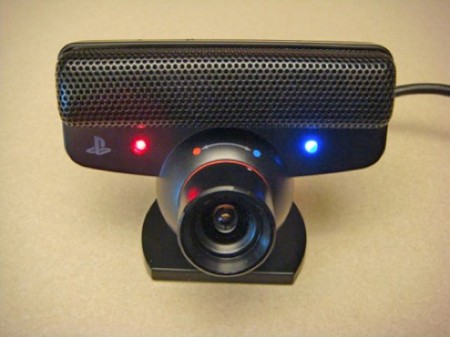
Wich ultimately makes it possible to get even faster frame rate, i have seen frame rate 640×80 to upto 1500 FPS when i ran MIPI clock faster form 270 to 320Mhz. which make possible to run MIPI clock faster than 200Mhz. If i would make a FIFO in reformatter we can de-couple MIPI clock and FPGA output.
#OPENCV PS3 EYE CAM FULL#
Lowest hanging fruit for optimization is output refromatter module in FPGA Right now FPGA YUV output is running at full 100Mhz ( which is driven by 200Mhz mipi clock /2 ) but output is fragmented and does not take full advantage of 100Mhz FX3 bus. Generally when designer surpass what USB can offer, they go to PCIE
#OPENCV PS3 EYE CAM PC#
Multi USB Design is certainly possible but need lot of custom solution on both of Hardware and PC side. Multi camera design will LUT/Gate wise fit onto MachXO3 but because of limited clock resources will cause issues doing anything fast. A somewhat larger FPGA would be needed, Lattice MachXO3 is a relatively small FPGA if looked for crucial high speed resources. Idea with Double camera may be possible, Built in PLL on camera may cause issue and drift frames, but in theory FPGA can keep track of Frames and correct if necessary. But one must implement custom application on PC side to receive RAW video data as CX3 does not have any logic to do any Debayer or for UVC, RGB to YUV conversion.


USB controller on FX3 can do full what USB 3.0 allows but 32bit Parallel port (GPIF) limits it to as mentioned above to 32bit 100MHz.Ĭypress offers Other FX3 like controller CX3, CX3 is specifically for MIPI CSI camera. FX3 is quite nice Chip i have found it delivers most of the time more than it claims.

This bandwidth in theory Translates to at 640×80 to ~4000 FPS. USB FX3 can do 32bit 100Mhz, which translate to 400 MBytes Per Second, a little over clocking of FX3 GPIF upto around 112MHz will bring 448MBytes Per second. I never tried, but sending frames via Pi3B+/Pi4B fast WLAN to other computer similar to this FPGA approach would allow for the same arbitray long capturing of echo “640*75*10/8*1007/1024^2” | bc -q That way the frames do not need to get stored. One application would make the FPGA solution presented here not needed even for hour long capturing is real time frame processing on a fast moving robot. I really would like to capture according that formula (or better with capturing only every other line and then doubling each line in post processing): This is quite goot for height=96: 76034/96+67=859, while real framerate is 841fps. I determined this formula for v2 framerate: 76034/height+67 It seems that I miss some register setting in that case. No matter what, the maximal framerate was always 1007fps. Hi, if you can tell me it would be very appreciated. Posted in Raspberry Pi Tagged camera, imx219, Raspberry pi camera, sony imx219 Post navigation We’ve seen others use advanced techniques to up the frame rate of the IMX219, too. Resources are available on Github for those eager to delve deeper.

While it’s probably outside the realm of performance required for the average user, ably demonstrates that there’s often capability left on the table if you really need it. While 1,000 fps is only available at a low resolution of 640 x 80, it’s also possible to shoot at 60 fps at 1080p, and even 15 fps at 3280 x 2464. This was achieved by wiring the IMX219 direct to an FPGA and then to a USB 3.0 interface to a host computer, rather than using the original Raspberry Pi interface. With this in place, it became possible to use the camera at framerates up to 1,000 fps. Instead, developed a custom IMX219 breakout module allowing the camera to be connected to an FPGA using all four lanes for greater throughput. In the Raspberry Pi module, only two MIPI lanes are used, limiting the camera’s framerate. However, the Sony IMX219 camera module used is capable of much more, and set out to unlock its capabilities.Īfter investigating the IMX219 datasheet, it became clear that it could work at higher bandwidths when configured to use all four of its MIPI CSI lanes. The Raspberry Pi camera has become a de facto standard for many maker projects, making things like object recognition and remote streaming a breeze.


 0 kommentar(er)
0 kommentar(er)
